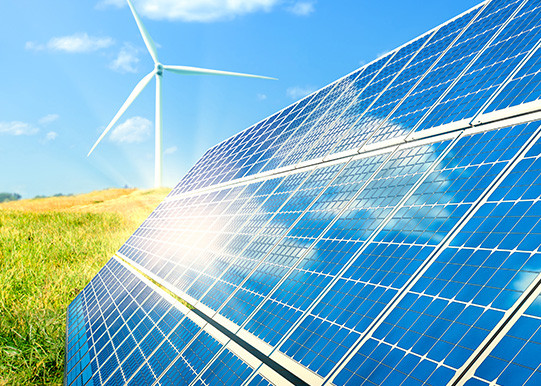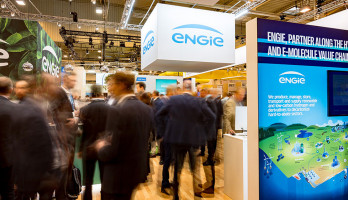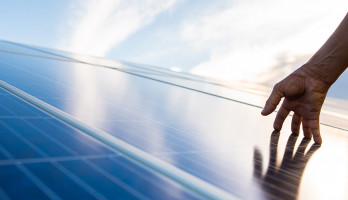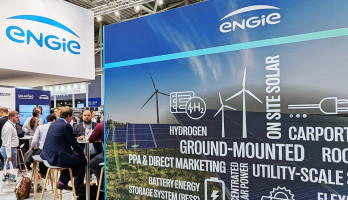
Impulse #16: Photovoltaics as “freedom energy”
Against the backdrop of the war in Ukraine, German Finance Minister Christian Lindner recently described renewable energies as freedom energies that not only contribute to energy security, but also make us more independent. What role does photovoltaics play in this?
"A very essential role! And it is also an important element to mitigate the climate change", Ralf Schürkamp, Managing Director of ENGIE Erneuerbare GmbH, is convinced. In order to share his expertise and first-hand experience with you, Manfred Schmitz, CEO of ENGIE Deutschland GmbH, hands over the reins to his colleague in today's editorial.
"Photovoltaics can make an important contribution in the fight against climate change. The Federal Government's expansion targets for 2030 are extremely ambitious - but feasible. The rapid advancement of large-scale photovoltaic plants will be decisive for this."
Ralf Schürkamp, Managing Director ENGIE Deutschland Erneuerbare GmbH
One question in advance: Do you know where our electricity mainly comes from on cloudless summer days? On sunny days, over 50 per cent of electricity is generated from photovoltaic systems! And the federal government's plan is for this figure to rise even further. You have certainly heard about it: it is now a good month since the Bundestag passed the federal government's so-called "Easter Package". The clear goal of the package is to accelerate the expansion of renewable energies - finally, if you will allow me this addition. The installed capacity of photovoltaics is to almost quadruple by 2030, from the current 59 gigawatts to 215 gigawatts. The decision has caused quite a stir throughout Germany. Admittedly, it is the implementation of an agreement already announced in the coalition agreement and thus comes as no surprise. But since its publication, the world has changed drastically, and solutions to reduce the need for gas imports and electricity storage are needed now more urgently than ever.
The finest hour for photovoltaics
In short, photovoltaics can do it. It can help us become less dependent on gas imports and electricity storage. There is a consensus that more and more electrification will take place in Germany in the coming years and that, as a result, the demand for electricity will continue to rise - just think of the increasing switch to electromobility and heating with heat pumps. According to forecasts by the Federal Ministry of Economics and Climate Protection, around 750 terawatt hours of electricity will be needed in Germany in 2030. 80 percent of this is to come from renewable energies, of which about 35 percent from photovoltaics. By way of comparison, we want to achieve a total of around 55 percent with onshore and offshore wind energy and 5 percent with hydropower. This impressively reflects the great importance of photovoltaics for our future and for the path to climate neutrality.
More photovoltaics for climate protection
In my opinion, the goals are good and, above all, they are right. But they are also insanely ambitious. Let me clarify that: It took us around twenty years in Germany to reach the current 59 gigawatts of photovoltaic capacity. We have a time horizon of eight years to quadruple this. Please don't get me wrong: this is certainly feasible. But it is clear that immense efforts and a clear simplification of the expansion are needed. For example, we must not delude ourselves into thinking that we can do this solely with the existing skilled workers in Germany - instead, we will definitely have to bring in qualified personnel from abroad. Another bottleneck is the worldwide shortage of materials, which unfortunately does not stop at photovoltaic systems. Did you know that currently 95 percent of the solar modules used in this country come from China? Here we have been facing unstable supply chains for months, and at the same time transport costs have risen massively. A positive trend reversal in both aspects is not foreseeable at the moment, on the contrary. In addition, China itself is currently expanding photovoltaics massively - in the first half of 2022 alone, 30 gigawatts will be added, so that future delivery capacities to Germany can hardly be reliably predicted. That is why I would like to make an appeal at this point for the expansion of a European photovoltaic production - not least because recent developments have shown where dependence on a single market power can lead. A European photovoltaic industry could be an important backbone for achieving the expansion targets.
Why photovoltaics has no alternative
The biggest hurdle on this path, however, remains the lengthy approval process within Germany. Federal policy has clearly set the direction and proclaimed highly ambitious goals - now I very much hope that this will spur implementation at regional and municipal level. In our day-to-day business, we see that planning, approval and implementation of photovoltaics do not yet meet the expansion targets. We need more speed here. Let me make it quite clear: in order to curb climate change, we no longer have any alternative. We must push renewable energies as a pillar of climate neutrality wherever we can. It is simply a matter of using every suitable surface. Rejecting photovoltaic systems for optical reasons, for example, as we are still doing, is not in the spirit of a green future. Instead, we must use all available photovoltaic technologies and distribute them nationwide to the extent that end consumers need them. Only with such a consistent approach can we avoid an additional, massive grid expansion.
Agri-photovoltaics: an opportunity for the energy transition
For photovoltaics, there is a combined target for rooftop solar plants and for ground-mounted solar plants; at ENGIE Erneuerbare GmbH, we assume that capacities will be split roughly in half in the future. In principle, photovoltaic systems should be found everywhere. Every small photovoltaic system contributes to more climate protection. Whether it's multi-storey buildings in cities with tenant electricity, carports or solar cycle paths - I think it's a good approach. However, we can only achieve the expansion targets if we develop the really large open spaces outside cities. To achieve this, we support solar projects as a full-service provider along the entire value chain - from construction and operation to marketing the electricity generated. Arable land and grassland as well as areas adjacent to transport infrastructures are ideally suited. Since Agrivoltaics - i.e. the simultaneous use of land for agricultural production and photovoltaic electricity production - is currently a hot topic of discussion, I would like to briefly touch on the subject. We see here a classic conflict of goals between food and energy production; both are necessary for life, both make us independent. To solve this conflict, the industry is currently investigating two models: on the one hand, elevated plants under which tractors can easily pass. And on the other hand, vertically mounted systems, which you can visually imagine as rows of fences. There are currently numerous pilot projects - also by ENGIE - to further develop this technology for wider use.
Now it's all about rapid implementation of PV projects
The targets for renewable energy have been set with the Easter package - now it is a matter of putting them into practice. This means in particular to further reduce the bureaucratic obstacles. In concrete terms, we need to set the course for more photovoltaics everywhere in Germany by 2025 with good and efficient approval procedures. Then we have another five years until 2030 for implementation. If everyone involved pulls together, we will succeed - I am convinced of that. By the way: photovoltaics is the perfect solution especially for all federal states that have a high demand for electricity. Photovoltaics are a great way to cover the typical midday peaks. The combination of photovoltaics and wind power works particularly well: to put it very simply, the very intensive solar energy in summer and the strong wind energy in winter complement each other - this is true for every federal state, although of course to a different extent. We still have a lot of untapped potential here. If we join forces and seize this opportunity now, photovoltaics can make Germany climate-neutral more quickly.
Dear readers, I would like to discuss this topic with you personally. Where do you see the biggest obstacles to achieving the expansion targets - and is photovoltaics also an option for you? Please feel free to send me an e-mail, I look forward to hearing from you!
Yours sincerely
Ralf Schürkamp
Managing Director ENGIE Deutschland Erneuerbare GmbH










